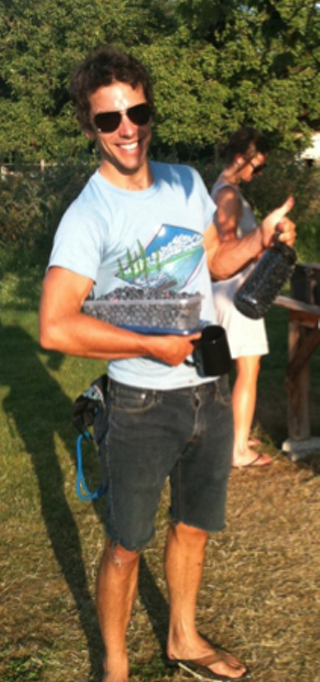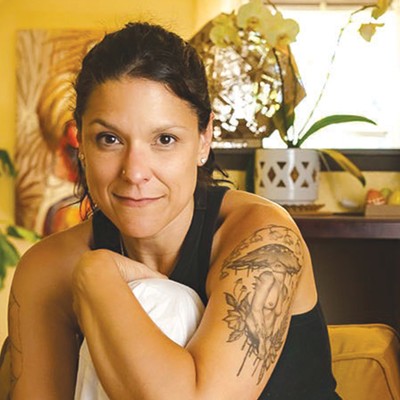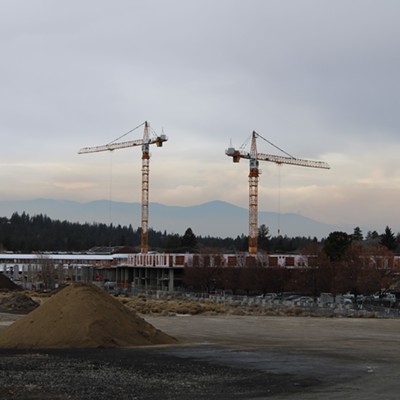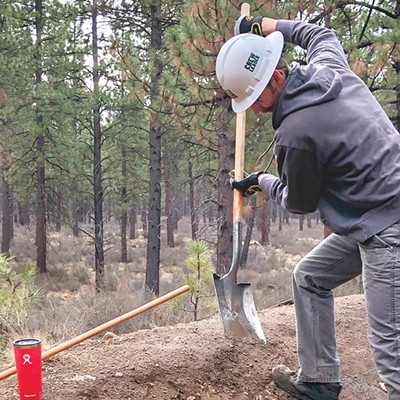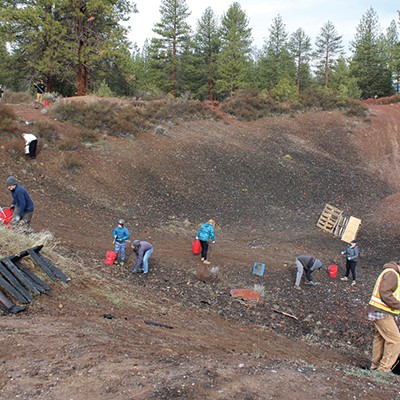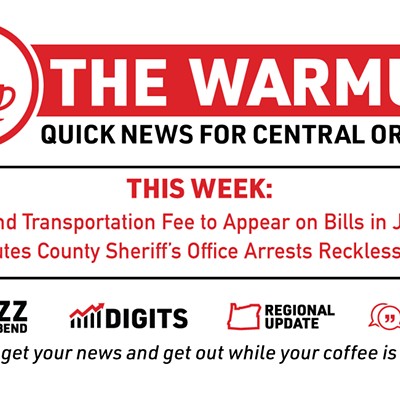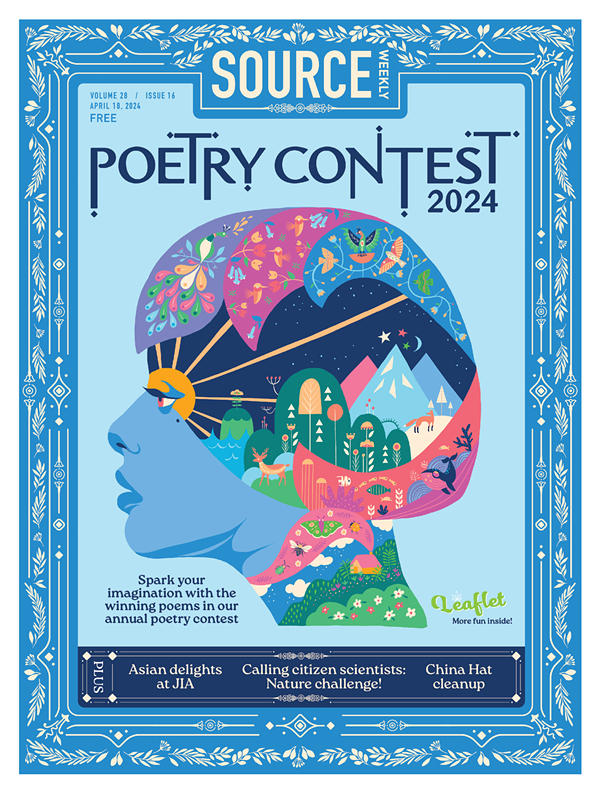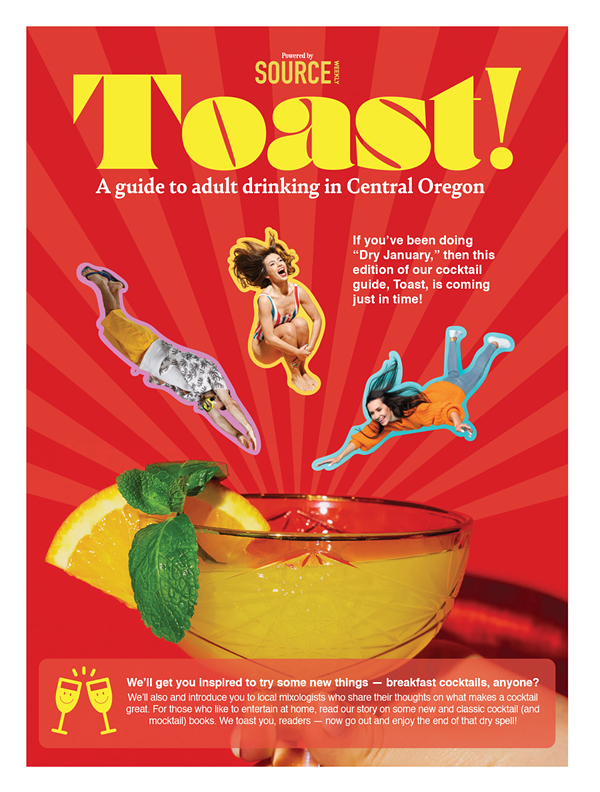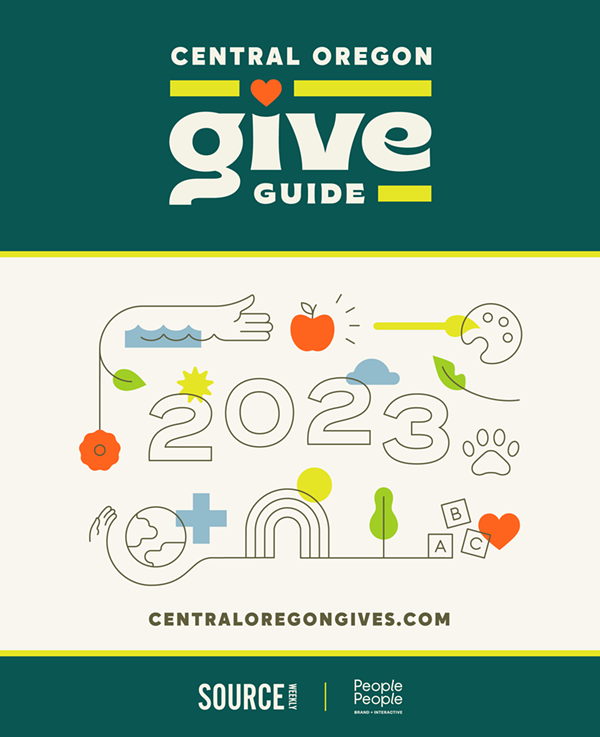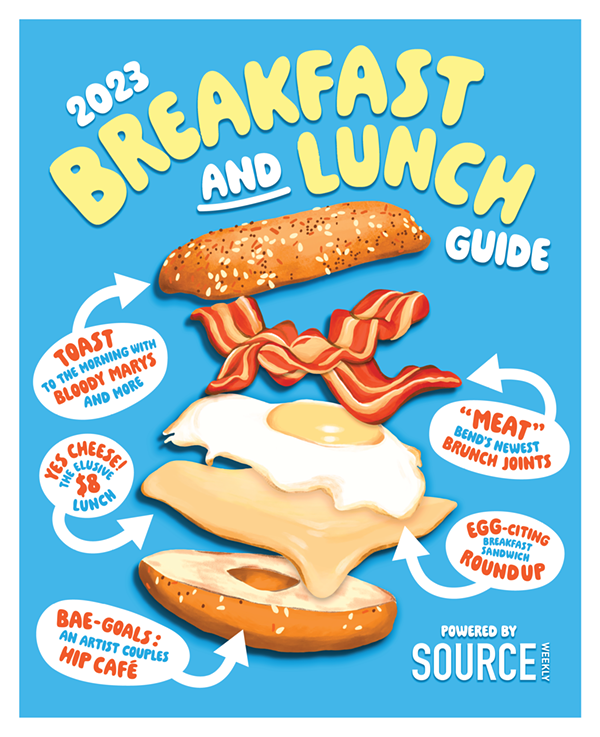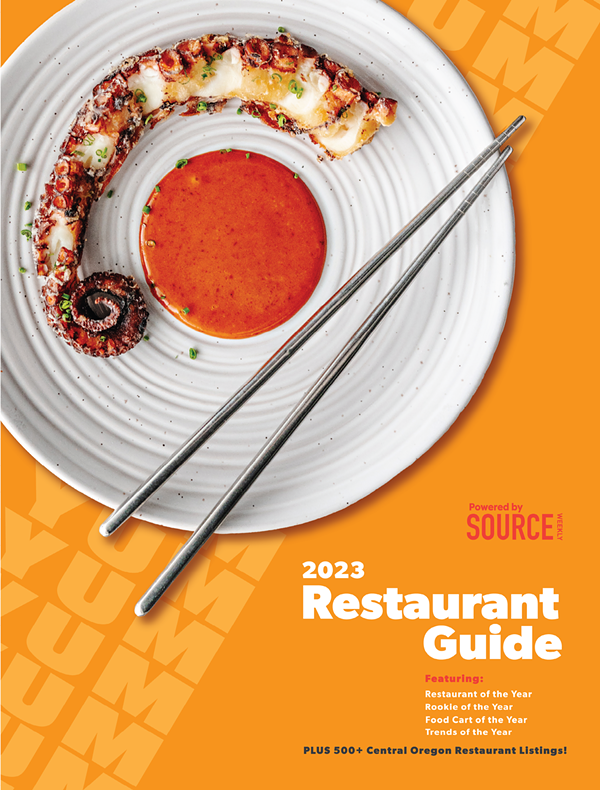City Councilor Victor Chudowsky always gets a prime parking spot out front of Thump Coffee in downtown Bend. That's because parking at the popular café isn't a problem. At least not for bike commuters.
Rather than another conventional parallel car parking space, similar to those lining the rest of Minnesota Avenue, a string of fire-engine red bike parking sculptures fill the conveniently located space by Thump's curb. Throughout the day it's common to see a handful of assorted bicycles locked to the 11-plus spots offered by downtown Bend's only bike corral. And for Bobby Grover, Thump's co-owner, 11 customer and employee parking spots makes infinitely more sense than a single car parking space.
"It [the bike corral] really supports business in the area," Grover said. "Plus, almost all of my employees ride their bikes to work."
But in Bend such ample and accessible bike parking is scarce, even though case studies, like those completed by bicyclinginfo.org, have shown that increased bike parking areas, when coupled with fewer spots for cars, boosts trips by bike. Part of the problem is that Bend requires new construction to provide a minimum number of parking spaces.
But that zoning rule here in Bike Town USA goes against the grain of a national movement that seeks to change the wording from "minimum" to "maximum." By discouraging driving, cities and businesses can encourage bike commuting and other multimodal forms of transportation. Officials at Bend's Commute Options, an alternative transportation advocacy group, agree.
"It's a misconception that a one-car parking space is being 'sacrificed for bicycles,' " said Commute Options Community Outreach Director Kim Curley. "You're adding 11 more bodies to that business. It's increasing foot traffic—or wheel traffic—in your business zone." Curley said Commute Options always nudges owners of new businesses toward reserving spaces for carpooling and bike parking.
Curley also said Bend's abundant free parking perpetuates the car culture in Central Oregon. The Commute Options official noted she's a fan of pay-to-park models that further dis-incentivize driving by asking drivers to pay rent for the real estate they use. Other cities are going a few steps further.
In May, San Francisco introduced legislation that increases the number of bike parking spots by new buildings from 2 percent to a minimum of 5 percent overall. Additionally, the new laws allow landlords to convert car parking into bike parking.
But Bend Community Development Director Mel Oberst thinks swapping car parking for bike racks is far from a cure-all. Oberst pointed out that all businesses are already required to have both bike and car parking—how much of each is dependent on a number of factors including square footage and number of employees. The community development director said Bend's sprawling, disconnected nature is alternative transportation's biggest stumbling block.
"Bend is a low-density community," Oberst said. "The way to approach it is to increase density. That gives you options." Adding grocery stores and restaurants—increasing commercial density—is the most efficient way to up pedestrian and bike traffic. That said, Bend's wintry weather and the community's general unwillingness to fund public transit systems further complicate the matter. Oberst also said the city does have a modest financial incentive program for new businesses that choose to meet alternative transportation-friendly guidelines.
Perhaps the biggest obstacle facing bike commuting in Bend, however, is its apathetic residents. Even though Bend likes to lay claim to "Bike Town USA," such a lofty title doesn't tell the whole story. While plenty of Bend residents own bikes, often in multiples, and ride recreationally for hours, many are still slow to grab the bike for a trip to the grocery store or the pub, much less to commute to work. A 2012 city of Bend survey shows 3 percent of residents walk to work, and less than 3 percent use "other means," like a bicycle. Less than 1 percent use public transport. By contrast, a staggering 78.5 percent drive to work alone.
"Too few people use a bike to get to work," Councilor Chudowsky stated. "It should play a greater role in people's lives than it does now."

